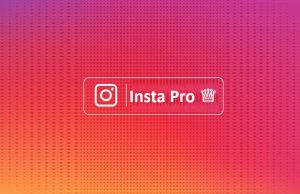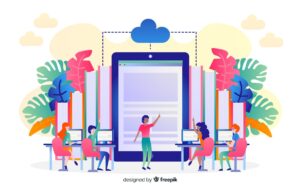Enhancing Personal Injury Rights: The Influence Of Social Media

Personal injury rights and the influence of social media have converged in various ways, shaping the landscape of legal claims and advocacy. The advent of social media has had a unique impact on personal injury rights. These platforms have become strong tools for raising awareness and building support networks for individuals who have suffered from personal injuries such as road accidents involving drunk truck drivers. People who suffer from personal injury cases should be aware of their rights to privacy and must know how to take action through social media. Thes best and most advisable is to consult with legal professionals who can perfectly guide and protect the claimant’s interests. In this article, we will extensively shed light on the influence of social media in enhancing personal injury rights.
How Social Media Enhances Personal Injury Rights
People can educate themselves about their rights and connect with legal resources by using social media platforms. Legal professionals have capitalized on social media’s reach to give valuable information and build connections with potential clients. Additionally, social media has helped the establishment of online support networks. This can positively allow personal injury victims to connect and find peace in shared experiences. These networks also offer emotional support and guidance throughout the legal process. This intrinsically empowers individuals to talk about their rights and seek justice. Following are the predominant ways in which social media sheds light on personal injury rights.
Accumulating Evidence
The emergence of social media has had an important impact on collecting evidence in personal injury cases. Social media platforms have proven to be of great assistance for potential evidence in personal injury cases. Users often share their daily activities, thoughts, and experiences. These include information and details relevant to an injury claim. The best thing about social media is that it has no limitations over who can access it. Through social media, the information can be shared worldwide. For instance, if a personal injury victim is from Nigeria, he can post about his experiences on his social media platform. In order to ensure that people from different regions become aware of his situation he can Buy Followers Instagram Nigeria. This will enhance his audience hence his voice would be heard.
Photos and videos posted on social media can also give visual documentation of an accident or the impact of those injuries on the life of the victim. These visual evidences can offer a good proof to support a personal injury claim. For example, a photo showing a callous condition or a video capturing a negligent act can be significant in establishing liability. These posts can offer valuable insights about physical or emotional harm in a victim’s life. However, it will be of no use if the victim does not have an audience to see these visual proofs. For example, if a man in Albania has suffered from a drunk driver accident and has visual evidence. He needs a big audience to support and raise voice for him. In such a situation. This will potentially help his voice to be heard by many people. Additionally, he would notice a rise in comments and likes due to increased number of followers which will help spread his case.
Easy Approach to Legal Resources
Social media has become a significant tool for disseminating legal knowledge because it is important to know the right information related to personal injury and truck accidents. Law firms and advocacy groups have recognized the power of social media platforms to reach a wider audience. They use these platforms to share articles, blog posts and infographics that sheds light on legal concepts and provide guidance on pursuing personal injury claims. This readily accessible information enables individuals to understand their rights and make informed decisions about seeking compensation for their injuries.
Law firms and individual lawyers actively engage with users, answering questions, addressing concerns, and providing initial guidance. Through social media platforms, individuals can directly reach out to legal professionals for consultations or referrals. However, an account with a great number of followers and a bigger image will capture more attention than an account with few followers and engagement. Let’s say a woman in the Philippines has suffered from a truck driver incident and is not aware of her personal injury rights. And enhances engagement on her social media account then there are more chances for her voice to be heard. The increased growth on her account will help her get immediate access to legal resources.
Online communities and support groups dedicated to personal injury can be found on various platforms but you need a strong social media presence in order to catch their attention. These communities offer a space for victims to connect, share their stories, give emotional support, and exchange practical advice. The collective knowledge and support available through these networks can assist individuals in navigating the legal process and making informed decisions about their personal injury claims.
Dealing With Online Reputation
Maintaining one’s online reputation in personal injury cases involves proactively considering the potential consequences of social media activity. Claimants can choose to adjust their privacy settings to restrict access to their profiles and posts. It can limit the visibility of personal information that could be exploited by insurance companies. It is important to review and control the information available on social media platforms to minimize the risk of damaging the credibility of the personal injury claim.
Personal injury claimants can also use social media to manage their reputation. By presenting truthful information regarding their injuries and the impact on their lives, individuals can provide a more accurate portrayal of their situation. Sharing updates about their recovery process or their efforts to seek justice can help prevent any misconceptions that may arise from opposing parties.
Additionally, a well designed website can be an amazing tool for enhancing personal injury rights by giving accessible information and resources. A greatly developed website should have clear navigation. It should be effortless for users to find information about personal injury laws, legal and the claims process. Important details such as FAQs and educational materials should be displayed and easily accessible.
Challenge Negative Stereotypes
Through social media, personal injury victims and advocates can challenge negative stereotypes or misconceptions about personal injury claims. They can highlight the physical, emotional, and financial toll that injuries can have on individuals and their families. By sharing these stories, social media has helped foster empathy and understanding among the general public, encouraging a more supportive and compassionate environment for personal injury victims.
The influence of social media on public perception has played a significant role in enhancing personal injury rights. Social media platforms have given individuals and advocacy groups a powerful means to shape public perception surrounding personal injury rights. By sharing personal stories, experiences, and raising awareness about the challenges faced by personal injury victims, social media has facilitated the humanization of these issues. It has provided a platform for personal injury victims to share their struggles, seek support, and educate others about the impact of their injuries on their lives.
Conclusion
This article has extensively discussed above the ways in which social media can help victims of personal injury. Social media can play a unique and effective role to ensure that the voice of the victim is heard by professionals so they can receive the best help in such times. Also, social media is a great tool for education and spreading awareness about road accidents so victims can know about their rights.






